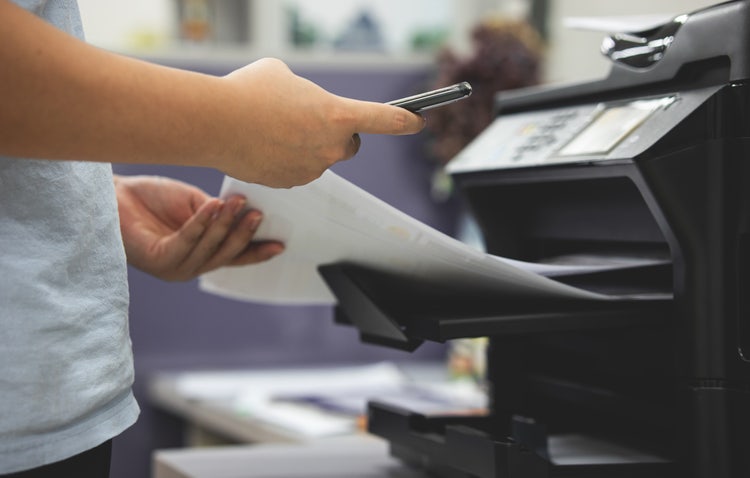The benefits of driverless printing

If you bought a printer many years ago, it would have come with floppy disks or a CD containing Printer Drivers. These drivers were necessary to make the printer work with your computer and would vary based on the type of computer or operating system you had. Before using the printer, you had to "install" the driver software from the disks. Without the correct driver, the printer might not work or have access to all its features. There were many different data formats for communicating with printers, with each manufacturer using a different language and often different dialects between printer models. You needed the correct driver for each printer if you had multiple printers.
With the rise of smartphones and tablets, the problem of printer drivers evolved. These platforms did not have printer drivers, meaning third-party software and workarounds were needed to print. Eventually, printer manufacturers started creating apps for smartphones to address this issue.
PDF: The printing standard that continues to change the game
In 1992, Adobe invented PDF — the Portable Document Format. As Adobe's co-founder, John Warnock, said at the time, "Documents should be viewable on any display and should be printable on any modern printer. If this problem can be solved, then the fundamental way people work will change."
PDF was derived from the PostScript printer language and aimed to make documents viewable on any display and printable on any modern printer. It had some additional features helpful for displaying those pages on the screen, such as navigating backward and forwards through the document, and even bookmarks for skipping to the index, from where you could jump back to a reference in the document. The PDF format was printer independent, meaning it did not include instructions for a specific printer. As a result, PDF gradually became a standard for printing across different operating systems and devices — leading to the reinvention of how computers print.
Apple's OSX adopted PDF as the file generated on the computer before it was sent to print, and PDF became one of the pillars of AirPrint, the standard used by all Apple products for printing. In the Android world, the Mopria Alliance of printer manufacturers leveraged PDF as a standard way to send documents to printers from an extensive list of vendors. Mopria worked with Google to include this support as standard in Android phones. In 2018, Microsoft Windows added support for PDF to be sent to Mopria-certified printers, using a solution that works out-of-the-box without needing additional software: the Windows IPP Class Driver. Today, there are over 120 million Mopria-certified printers from 24 manufacturers with 6,500+ certified printer models.
Adopting these standards, including PDF, enables "driverless" printing — a win-win-win for all.
The benefits of driverless printing
Driverless printing simplifies the process of printing for users (knowledge workers) by allowing any device to print to any printer without requiring special software. This standardization of the printing experience across printers eliminates the need for users to learn how to print to a new printer. Additionally, users can print to it using a familiar interface.
For enterprises, driverless printing simplifies the deployment of new computer equipment since there is no need to load printer drivers for specific printers. If the printers available change during the lifetime of the computer or device, no additional software is required. Security is also enhanced, as there is no requirement to give a user elevated 'software installation permission' when they want to print to a new printer.
Driverless printing is a significant development for printer manufacturers as it eliminates the need to repeatedly develop and release software for every new printer brought to the market. Traditionally, printer software includes multiple components such as a 'Print Options' dialog box, a module for creating the specific language (the PDL — Page Description Language), and a module for communication between the client and printer. With driverless printing, the latter two components are standardized, implemented, and deployed only once, for example, based on PDF and the Internet Printing Protocol (IPP). The 'Print Options' dialog is also available as a standard feature, further reducing the manufacturer's efforts. However, some platforms, such as Windows, allow the creation of small applications that enable manufacturers to customize the user experience and control special features and connections to other services.
Printing based on PDF comes as standard with Windows, Mac, iPhone / iPad, and Android — popular Linux distributions even support it. Advances in technology mean that the computer can ask the printer about its capabilities and present those options to the user without the need for the user to install special software manually.
Enabling seamless printing across devices with Adobe
Adobe strongly supports driverless printing, and its increased support for PDF empowers users to use a PDL with superior capabilities that can accurately represent their content and be reproduced on any device, from small desktop printers to the most advanced print production systems. Adobe's Print Engines are designed to accurately reproduce PDF files exactly as they appear on the screen, using the same technology found in Adobe Reader & Acrobat and Adobe's creative applications.
To support driverless printing solutions from Microsoft, Apple, Android, and Mopria, Adobe ensures that its print engines (Adobe Embedded Print Engine & Adobe PDF Print Engine) are compatible with the standards used by these solutions.